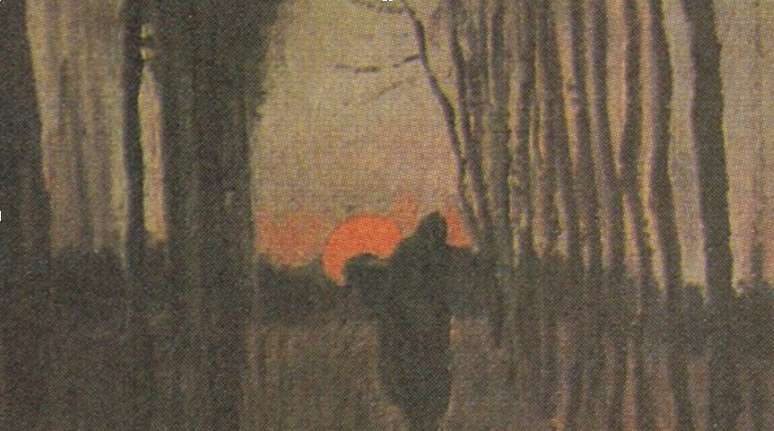The search technique allowed the researchers to also discover the date in which the painting was depicted
Led by Donald Olson, an astronomer from the University of Texas, researchers accurately identified the location depicted in “Avenida dos Álamos ao Pôr do Sol” by Vincent van Gogh. The riddle was solved through astronomy, one of the oldest scientific disciplines.
The new project takes inspiration from the alignment of the sunset between the buildings of New York during the solstices, which can only be observed at certain times and on well-defined days. Since the sunset in Manhattan looks so much like the one depicted on the canvas, Olson says he might do some sort of reverse engineering to get more information about the painting.
“If we could identify the avenue on 19th century maps, then we could determine the direction of the street on the compass that appears in the artwork. We could then use astronomical calculations to determine the date when the disk of the setting sun aligned as Van Gogh depicted it.
To do this, the team used the correspondence that the painter wrote to Theo, his brother. On his canvases, he specified places and weather conditions that resembled the possible location of the Avenida dos Álamos.
The discovery
After their analysis, the scholars concluded that the scene was captured between November 5 and 14, 1884. By entering this information into a planetary computer program, they concluded that the Sun was setting in a southwesterly direction, in the cardinal direction of a celestial point. object between 240o and 244o.
In the next phase they went to the place where Van Gogh painted the work Avenida dos Álamos in autumn, painted before sunset. However, they noted that the location of the two paintings was similar, but not identical, and returned to the maps. After identifying three possible routes, they arrived at the Weverstraat street, which runs through the center of Nuenen, the Netherlands.
“Today,” added Olson, “we can still look at the same stretch of road where van Gogh walked on a cool autumn afternoon and reflect on how the artist, in his native Holland, was already interested in representing the phenomena of the sky, four years before he started creating his famous starry nights in the south of France,” he concluded.
This is not the first occasion when researchers analyze the works of Vincent van Gogh. In February, a study conducted by Chinese and French scientists revealed that the painting “Starry Night” depicts the night sky according to physical laws: the authors discovered that the vortices were painted following the laws of air turbulence flows.
Source: Terra
Rose James is a Gossipify movie and series reviewer known for her in-depth analysis and unique perspective on the latest releases. With a background in film studies, she provides engaging and informative reviews, and keeps readers up to date with industry trends and emerging talents.







